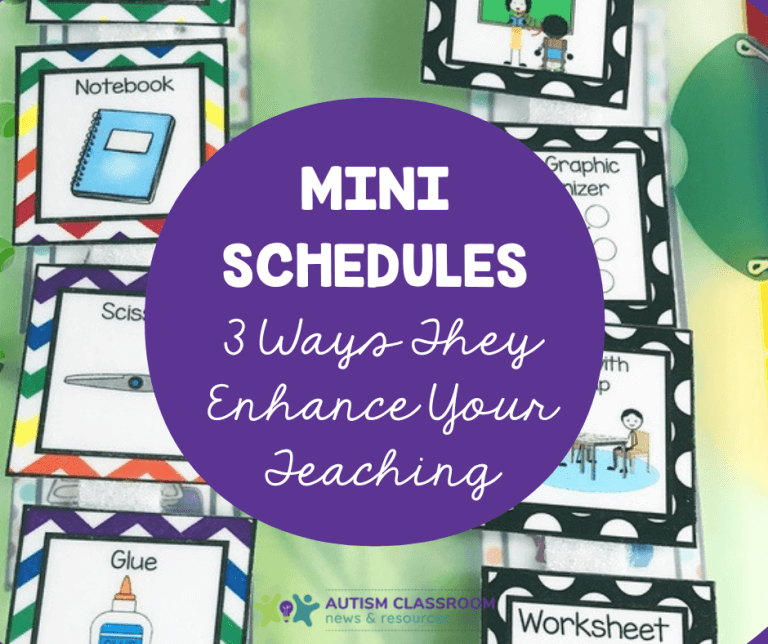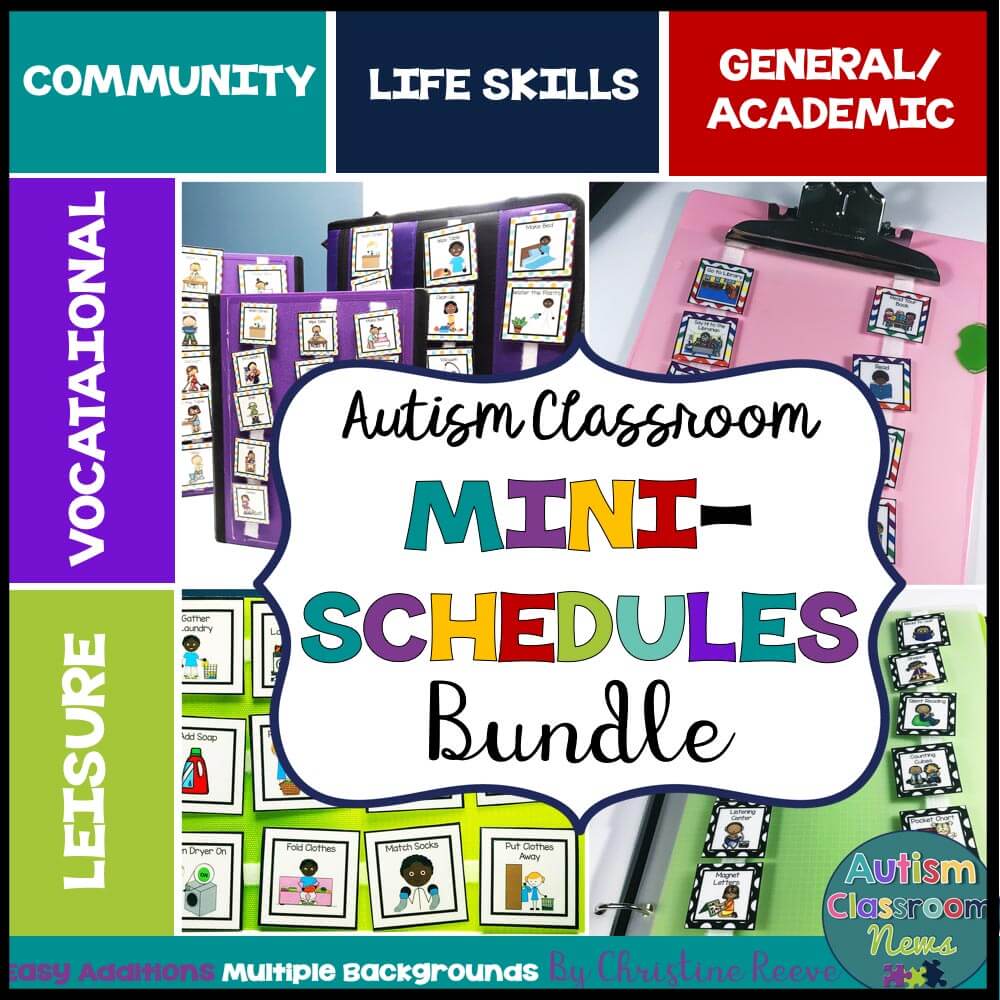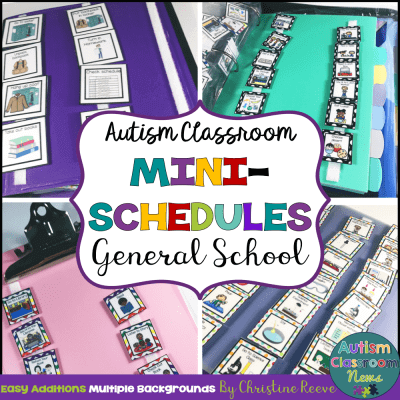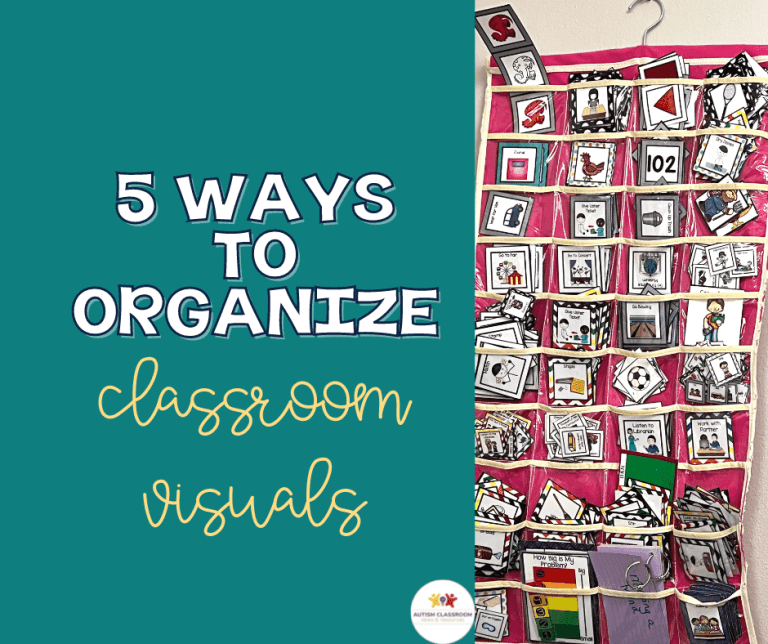Mini visual schedules are sometimes called activity schedules (but that can also be a daily schedule. Sometimes you’ll hear them referred to as task analysis schedules, because often we use them to show students the step in a skill we are teaching with task analysis steps.

So people call them many things, and I typically call them mini schedules. They are mini visual schedules because instead of representing the whole day’s activities, they break a task or activity down into smaller steps.
Who Needs Mini Visual Schedules?
First, let me say that I don’t think visuals are just for students with autism. In fact, if I had more time, I have a whole beginning of a presentation about how we all use visual schedules. I write notes to myself, prioritize my daily list of things to do, and make checklists of steps to tasks I don’t complete frequently. Those are all examples of visual supports.
Students in our special education classrooms often have difficulty with executive functioning, or organizing their materials, tasks and even thinking. Because of those difficulties, mini visual schedules can be helpful for many of the students we work with in special education. They are particularly associated with students with autism because they are a visual way of giving directions. And many individuals with ASD comprehend visual information more easily than verbal.
Why Mini Schedules are Important in Your Classroom
I think that most teachers, especially those working with students with autism, are told they need visual schedules. However, they aren’t always told WHY the visual supports are so important. The full explanations are longer than I can cover in a blog post. However, these are 3 primary reasons that mini schedules, in particular, can improve your instruction.
1. Mini Schedules Encourage Nonverbal Prompting
Many of our students become easily dependent on verbal prompts, or prompts in general. For students with autism, this is because they may not attend to the relevant information in their environment. So they may attend more to the prompt than the cues of the task. For other students, it might be a similar reason. Or maybe they hear our verbal directions so frequently they come to rely on them.
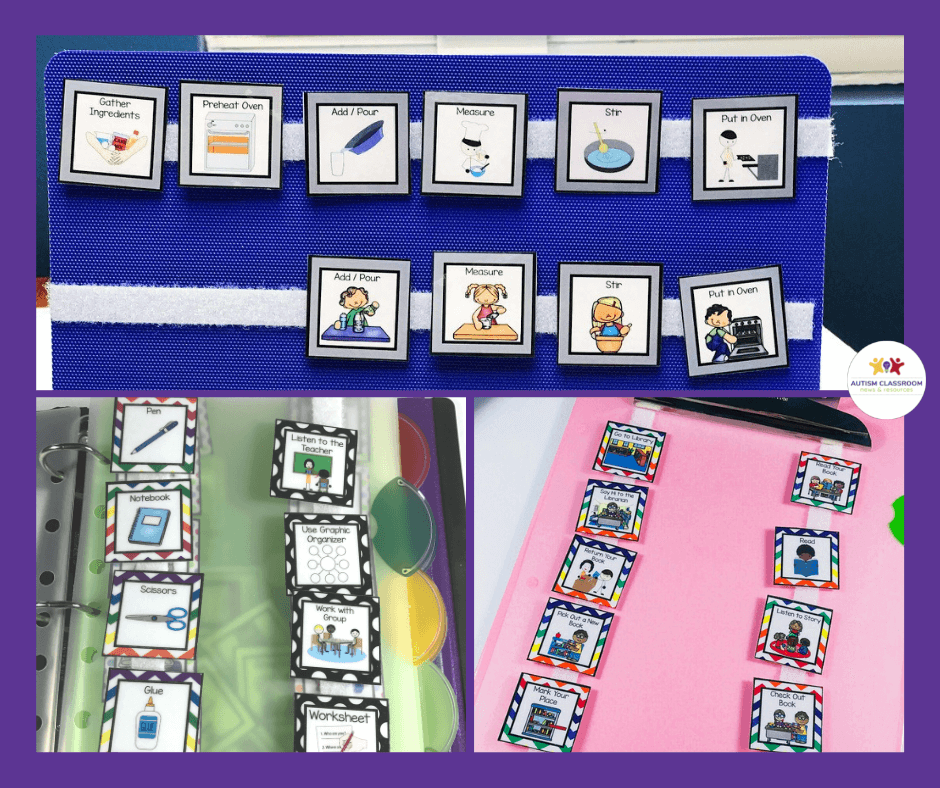
Our teaching is typically most successful with these students if we use more nonverbal prompts. Within the visual schedule, If your student can understand pictures, then nonverbally point to the picture of each step. This can then easily be faded by fading the point (i.e., moving your finger farther away, waiting before pointing to see if there is independence).
By using nonverbal prompts, your students learn to follow that first direction (i.e., “load the dishwasher”). Then the steps of the task become the cues they follow for the next step.
- You say, “load the dishwasher” and the student opens the dishwasher.
- The open dishwasher then cues him to get a dish.
- The dish in his hand then cues him to put it in the dishwasher.
- and so on.
2. Mini Visual Schedules Encourage Staff Consistency
Let’s face it, visual schedules aren’t just for our students. Mini visual schedules cue the staff on the steps of a task. They remind all of us about what comes next.
This is important because when I wash dishes and you wash dishes, we probably don’t do it exactly the same way. Let’s say I put the dishes in the sink first and then fill it with water. But you put the water in first and then add the dishes. The order of the steps would be different whether you taught Sam that day or I taught him.
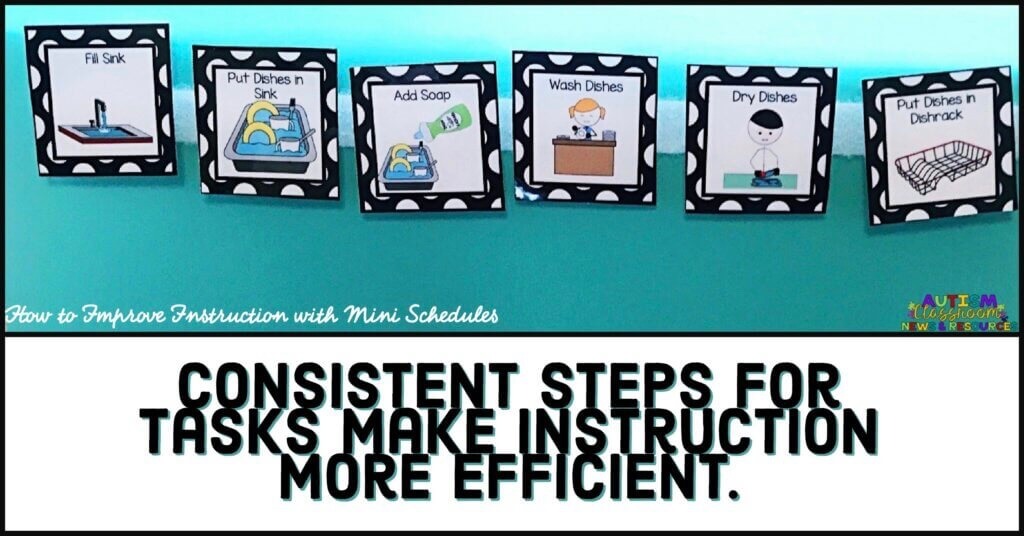
Our students need explicit instruction and they need that instruction to be consistent. If you and I teach skills with different steps or in a different order, they might eventually learn to do it one way with you and another with me. But in the end, it is going to take longer, be harder, and generally make our instruction inefficient.
Mini-schedules are set up so that the student and all the staff complete the task in the exact same way each time. Even though I put the dishes in the sink first, if the team decides that filling the sink before putting in the dishes is important, we would do it that way. So I don’t prompt Sam to put the dishes in the sink before filling it.
3. Mini Schedules Build Independence
Finally, the most important reason for using mini schedules in the classroom is that the adult can fade out and the student can complete the task with just the schedule. This increases this student’s independence.
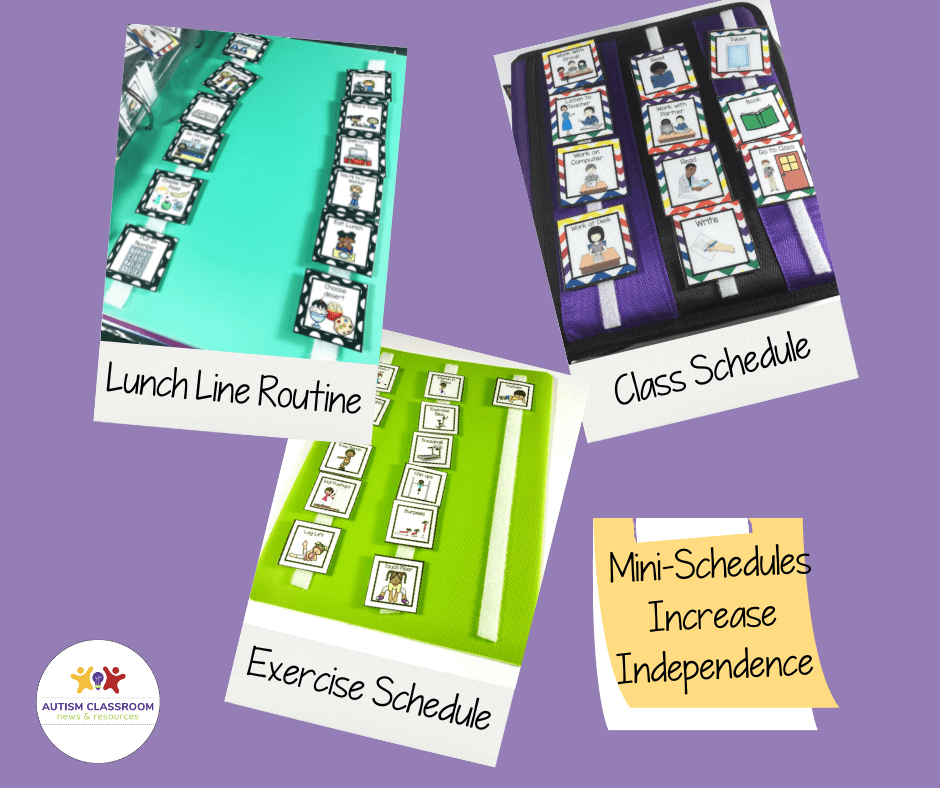
Yes, I know some of you are saying, but he has a schedule so he’s not independent. And yes, we could eventually fade out that schedule is needed.
But am I less independent going to the grocery store with my grocery list? I think not. We are all taught to do that to improve making good food choices (not my strength). I’m being a good shopping planner. So why would we think that a student isn’t independent if he has a grocery schedule or a picture list.
Another example. What about a student with an AAC device to talk. I hope we would never think we need to take that away from him to help him be more independent. Because it would make him LESS independent to be without it. Why are schedules any different?
Mini visual schedules, like all kinds of visual schedules (written or picture), can help our students in multiple ways. But they also help our teaching because we are more consistent across staff with the steps we present and, frankly, they often keep us on task.
Looking for Mini-Schedule Visual Supports?
Those are just some ways that mini-schedules can help make students both faster learners and more independent at a variety of functional skills. If you are looking for mini-schedules you can print and use, check out my mini-schedule bundle on TpT.
sign up for free tips each week in your inbox and Grab 2 free mini-schedules for fall from the resource library
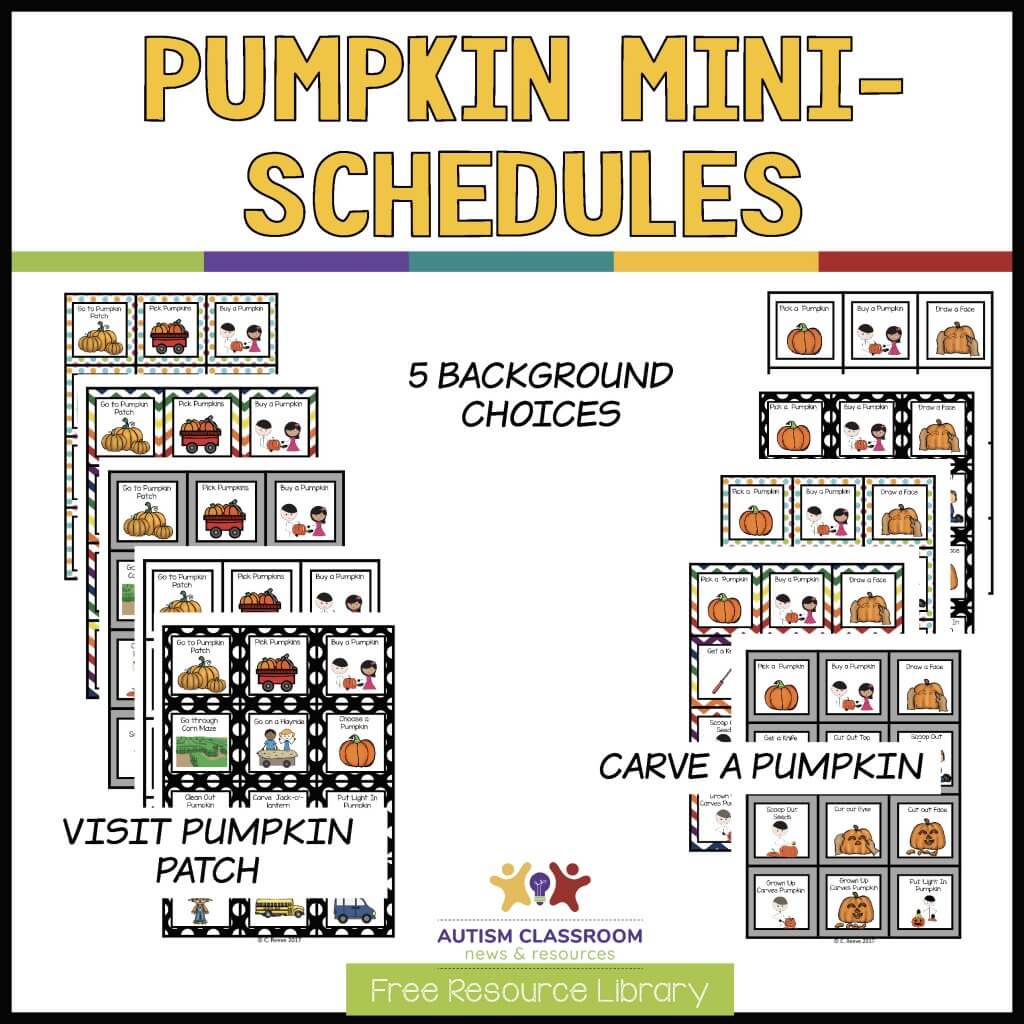
There are 2 mini-schedules included in this set, each with 5 different backgrounds.
Grab them from the Free Resource Library. Click below to navigate or join the free library.

